Career advice: Jeff Campbell, SpinVFX
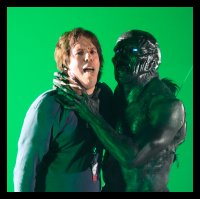 Jeff Campbell is a partner at Toronto’s SpinVFX, where he acted as VFX supervisor on the recent movies Max Payne, Legion and Priest.
Jeff Campbell is a partner at Toronto’s SpinVFX, where he acted as VFX supervisor on the recent movies Max Payne, Legion and Priest.
He began his career in CG in 1992 as an animator at Toronto’s Stargate Studios, quickly moving into compositing and finishing on the Quantel Harry. He subsequently joined Command Post (later known as Toybox), where he worked on Fight Club and was lead Inferno artist on The Cell, before joining Spin in 2003.
He is currently ‘filling in’ on the Showtime series The Borgias before moving back onto film projects in 2011. In this interview, he talked to us about the skills an artist needs to break into the compositing market.
CG Channel: What does your current job involve? Give us the one-line summary.
Jeff Campbell: I suggest creative and technical solutions all along the VFX process from script to screen.
CGC: And what does that mean in practice?
JC: A typical day in the facility would begin at 9am, previewing shots on my own through ‘Spinternal’ (our in-house project and asset-management system), just to be prepared for any surprises in dailies. After screening work from all VFX departments in the dailies themselves, we post work for review to the client’s FTP server.
By 11am, I’m checking shots in the cut for continuity, then I walk around each department informally to offer feedback, following by meetings with the department heads to review expectations of new shots.
Lunch is a burger and beer, then I review shots with the client over cineSync. After that, I talk to the department about the client’s notes, and then it’s Flame time. I do look development on certain shots and search out and test elements for artists to use. Around 5.30pm, I drink beer – that makes it all better.
There is usually another client cineSync session at 7pm if we’re close to deadline, then 7.30pm is creative playtime. This is when I can personally work on shots or do look development. Around 10pm, I go home for a late dinner and to lie to my wife that this work schedule is temporary.
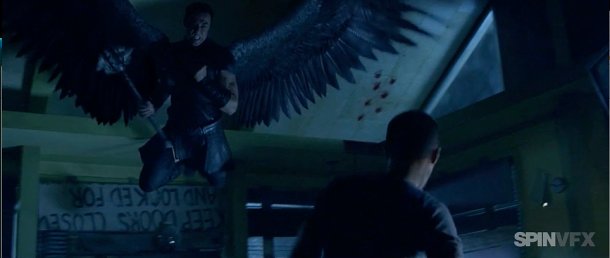
A still from Scott Charles Stewart’s Legion, on which Jeff acted as Spin’s VFX supervisor.
CGC: What’s the best part of the job?
JC: Seeing the shots on the big screen.
CGC: And what’s the worst?
JC: Not having enough time to actually work on shots myself.
CGC: What do you get out of working at a smaller facility that you wouldn’t at a big studio?
JC: A small facility allows a closer working relationship with the artists and a happier, more productive environment. Working at a smaller studio, you learn to be a jack of all trades – I like to see that each artist knows at least two types of software, in order to fill any gaps in production. For one commercial I worked on, I built the props, was the hand model, and finished the spot on a Harry.
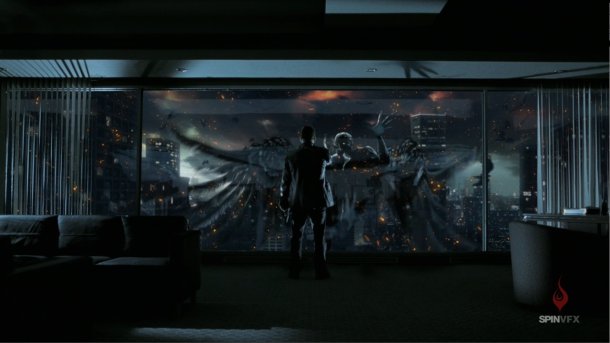
Another of Jeff’s recent VFX supervision gigs: 2008’s Max Payne.
CGC: Let’s talk about compositing. What is a studio aiming to achieve in the comp?
JC: Seamless integration – technically, visually and emotionally. We like to add value to even the simplest shots, going that extra mile beyond the general shot description to make a good shot look great.
CGC: What software skills do you need? Do you need to know Nuke?
JC: Yes at most film facilities. Nuke has really taken over the industry, and it’s an integral part of our pipeline at Spin. A lot of our scene assemblies are 3D, so knowledge of compositing in a 3D environment is essential.
Personally, I still think Flame rocks: I can’t do a feature without one [a Flame suite]. It will do all those out-of-the-ordinary shots in a fraction of the time. I know a lot of Flame and Combustion guys that have awesome reels and after a week on Nuke they move right into a lead level of compositing. But keep in mind if you’re mid-level or junior, I’m going to hire the guy or girl with Nuke experience first.
CGC: What about other skills?
JC: The skill set has been evolving. Compositors are now taking on tracking, lighting, texturing and animation tasks, so technical knowledge across all of these departments is necessary. More and more tools are being handed over to compositing to give maximum control over the finish of a shot.
These technical skills are necessary to streamline workflow, provide custom scripts to minimize workload, come up with techniques to create the coolest new looks and problem-solve render errors.
And of course, artistic sense is mandatory. You need a good eye to make a shot successful.
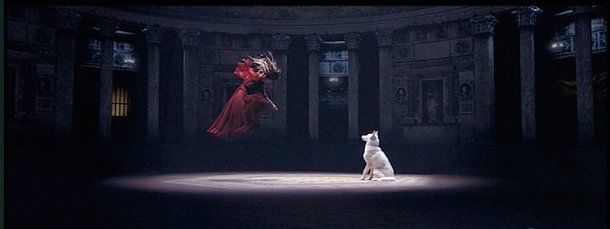
Dark work: matching blacks is crucial in the comp, as shown in this shot from 2000’s The Cell.
CGC: So what does having a good eye involve?
Naturally knowing that there is something wrong with the shot. The talent comes in knowing what is needed to correct it.
The first thing to look for is matching black levels. The compositor has to lift or lower the blacks in the CG element to match the blacks – and the colour cast in those blacks – in the scene. Same goes for the whites. Always do an overall gamma check on your comp to check that your levels are matching in a variety of extra bright and dark situations.
You also need to check the sharpness of any CG render. Add softness to match the blur in the plate. Cast shadows from CG renders often look fake because they do not match the shadow value of the scene. Also make sure there are the proper contact shadows to properly ground the CG object. Finally, grain management is important. Look at each individual RGB channel in grayscale to check the grain matches the surrounding scene.
CGC: And what personal qualities do you need to be a good compositor?
JC: Beyond artistic sense? The ability to criticize your own work: to step back and visualize what is working and what isn’t. If you know of problems in the comp, don’t try to pass it off as final hoping no one will notice.
You also need to understand how the shot cuts into the film. It’s important to know the film, to understand how the shot will support the story. And you need working knowledge of all CG departments. Learning another department’s software makes you a better-rounded artist.
And hard work and dedication don’t hurt either. It’s a very small industry, and people keep tabs on you.
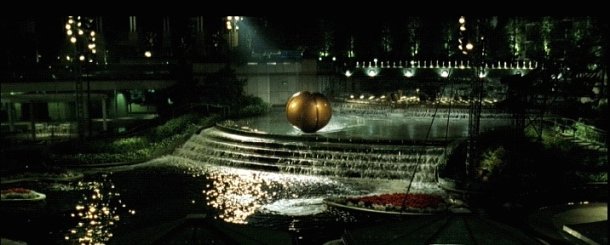
Early days: this shot of 40-tonne ball crashing through a commercial plaza from Fight Club was accomplished using 3D camera-projection techniques, displacements and textured geometry, done entirely inside Inferno.
CGC: What single piece of advice would you offer young artists wanting to follow in your footsteps?
JC: Warning: one ‘Good Old Days’-type story coming up! When I first started in VFX, there were no digital FX courses, so I went out and bought a Power Macintosh and forced myself to learn all the 3D and paint packages available at the time. When I was confident enough to go out in the industry, I volunteered to work for free to get in the door. In less than a week I was a paid employee. I would stay late reading manuals and learning all the other types of software that I couldn’t get my hands on at home, like Quantel Harry and [Maya precursor] PowerAnimator. So make yourself indispensable. Always be at your very best and you’ll get noticed.
